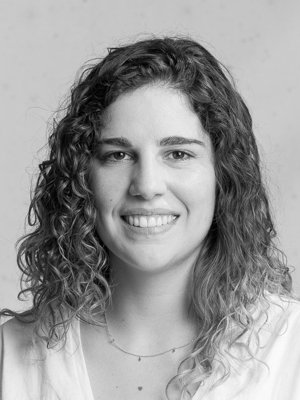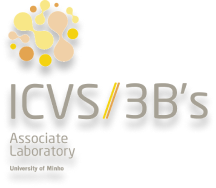
Molecular Therapies
The remarkable advances in molecular biology in the past decades have led to a better understanding of the mechanisms implicated in the pathophysiology of many CNS disorders as well as mechanisms that control axonal regeneration. This knowledge has raised the hope of developing new therapies that can attenuate secondary damage and maximize regeneration after injury. Our team had previously described that agents such Levetiracetam and Baclofen are able to protect the spinal cord in the acute phase of the injury. Moreover, we also demonstrated that IL-4 administration is able to modulate the inflammatory response after CNS injury and that Roflumilast promotes axonal regeneration and functional recovery after spinal cord injury. The goal of this research topic is to develop and test new molecular therapies that can heal the injured CNS. These novel therapies will focus into 3 key areas: 1) Neuroprotection, find new molecules that can modulate deleterious events such as the dysregulated immune response and excitotoxicity; 2) Neuroregeneration, tested new molecules with the ability to increase the intrinsic capacity of neurons to grow; and 3) Combinatory Approaches, find molecules that act synergistically to protect and regenerate the nervous tissue.
Funding Agency
FCT – Fundação para a Ciência e Tecnologia
Wings for Life
Project Reference
FCT: PTDC/DTP-FTO/5109/2014;
PTDC/BTM-MAT/29968/2017;
EXPL/MED-FAR/1529/2021 // WfL: FL-ES-03/19
WFL-PT-14/23
Project Members


António J. Salgado

Pedro E. Ferreira

Susana Monteiro

Belém Sampaio-Marques

André Mira

Marta F. Lima

Adriana F. Gonçalves

Ana Lima-Pinheiro

Andreia Monteiro

Jonas Campos

Bárbara Carneiro-Pereira

Luís S. Fernandes

Melyssa Carvalho

Sofia Cravino Serra
Main Project Outcomes
S. Queirós, “Right ventricular segmentation in multi-view cardiac MRI using a unified U-net model”, in E. Puyol Antón et al. (eds) Statistical Atlases and Computational Models of the Heart. Multi-Disease, Multi-View, and Multi-Center Right Ventricular Segmentation in Cardiac MRI Challenge. STACOM 2021. Lecture Notes in Computer Science, vol 13131, pp. 287-295, Springer, Cham, 2022.
“Best Paper Award in the M&Ms-2 Challenge”, by M&Ms2 Challenge organizers and the Medical Image Computing and Computer Assisted Intervention (MICCAI) Society.
Main Project Outcomes
Lima R, Gomes ED, Cibrão JR, Rocha LA, Assunção-Silva RC, Rodrigues CS, Neves-Carvalho A, Monteiro S, Salgado AJ, Silva NA, Levetiracetam Treatment Leads to Functional Recovery after Thoracic or Cervical Injuries of the Spinal Cord, npj Regenerative Medicine 2021, 6:11.
Sousa N., Santos D., Monteiro S., Silva NA, Barreiro-Iglesias A., Salgado AJ., Role of Baclofen in Modulating Spasticity and Neuroprotection in Spinal Cord Injury, Journal of Neurotrauma 2022, 39 (3-4), 249-258.
Campos J, Silva NA, Salgado AJ. Nutritional interventions for spinal cord injury: preclinical efficacy and molecular mechanisms. Nutr Rev. 2022 Apr 8;80(5):1206-1221.
Lima R, Monteiro S, Gomes ED, Vasconcelos NL, Assunção-Silva R, Morais M, Salgado AJ, Silva NA, Citalopram administration does not promote function or histological recovery after spinal cord injury. International Journal of Molecular Sciences 2020, 21:1-17.
Lima R, Monteiro S, Lopes J, Barradas P, Vasconcelos N, Gomes ED, Assunção-Silva R, Teixeira F, Morais MM, Sousa N, Salgado AJ, Silva NA, Systemic Interleukin-4 Administration after Spinal Cord Injury Modulates Inflammation and Promotes Neuroprotection, Pharmaceuticals, 2017, 10:83.
Vasconcelos N., Gomes E. D., Oliveira E., Silva C., Lima R., Sousa N., Salgado A. J., Silva NA, “Effect of riluzole and magnesium in a rat model of thoracic spinal cord injury”, The Spine Journal 2016, 16 (8), 1015-1024
Lima R, Pereira IM, Silva NA (2020) Neuroprotection in the injured spinal cord. In: Handbook of Innovations in Central Nervous System Regenerative Medicine, pp 125-145: Elsevier.
TV interview to Porto Canal, “Consultório”, February 2020, https://portocanal.sapo.pt/um_video/60sJCyL6DaKFL1qOrOPb
Interview to Radio Observador, E=MC2, December 2021 https://observador.pt/programas/e-mc2/secretoma-o-segredo-para-lesoes-da-medula-espinal/
Radio interview to Antena 1 – “Ponto de partida 89 – Oficina dos Neurónios”, September 2018 https://www.rtp.pt/play/p2063/e366581/ponto-de-partida



Contact us
Phone: +351 253 604 967
Fax: +351 253 604 809
Email: icvs.sec@med.uminho.pt
Address
Life and Health Sciences
Research Institute (ICVS)
School of Medicine,
University of Minho,
Campus de Gualtar
4710-057 Braga
Portugal

Copyright ©2022 ICVS. All Rights Reserved



Copyright ©2022 ICVS. All Rights Reserved
Address
Life and Health Sciences
Research Institute (ICVS)
School of Medicine,
University of Minho,
Campus de Gualtar
4710-057 Braga
Portugal



Copyright ©2022 ICVS. All Rights Reserved
Address
Life and Health Sciences
Research Institute (ICVS)
School of Medicine,
University of Minho,
Campus de Gualtar
4710-057 Braga
Portugal


